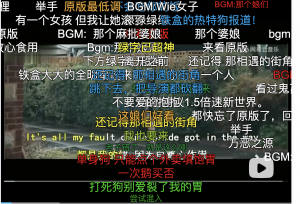
Figure 1. “COS:中國視訊網站bilibili的吉祥物“22娘”” by Poooyjie is licensed under CC BY-NC-ND 2.0
Introduction
With the rise of global platformisation, the global platform economy can be considered to be dominated by the US and China. In recent years online browsing videos has become one of the most popular forms of entertainment in people’s lives. With the same US-owned Youtube platform, Bilibili (Chinese:哔哩哔哩) stands out among the numerous online entertainment video platforms in China. This study will present basic information about the platform such as how long it has been operating, what areas it operates in, and how it is profitable, and on that basis, it will analyze Bilibili’s business model to explore whether the platform is successful; whether there are some risks associated with the platform.

Figure 2. Source: a screenshot of Bilibili PC Home Page
What is Bilibili?
Bilibili is currently the largest online pop culture and entertainment community for young people in China, covering anime, games, live streaming, painting, music, fashion, lifestyle, technology, and other cultural elements that young people are attracted to (Graziani, 2021). Since Bilibili was established in 2009, it has grown from a small social content sharing platform inspired by ACG (anime, manga, and games) to a full-fledged online entertainment video platform with over 237millions of monthly active users in 12 years (Ma, 2021).
The most distinctive feature of Bilibili is its “Danmu” culture (“bullet chat”). This is a form of video commenting used for online videos. Viewer comments appear directly in the video playback, either in real-time or left by previous viewers based on a specific moment in the video. Comments from a moment in the video will fly across the screen at the same time as the video plays, attracting the viewer’s attention silently. In China, this “Danmu” culture was first adopted by Bilibili and AcFu and has now become a common form of commenting on major mainstream video platforms. This enhances the viewer’s desire to share and the fun of the video (Mei, 2021).

Figure 3: ‘That Girl’ MV is licensed under CC BY-NC-ND 4.0
Source: a screenshot of Bilibili with bullet chats
Who uses Bilibili?
The basic users of Bilibili could be classified into 6 categories: 1. Fanatic ACG fans; 2. ACG content creators; 3. Online video fans; 4. Live streaming fans; 5. Learners (users watch online instructional videos on Bilibili); 6. Game players. The reason for this is that when Bilibili was a nascent company its main business was ACG, although now Bilibili has expanded its business to other areas, its loyal users are still retained through Bilibili’s purchase of a large number of Japanese animation copyrights (Wang & Xiao, 2021). According to Questmobile, the majority of Bilibili’s user base is Generation Z (Chinese born between 1990 and 2009), which is a highly active consumer group in the market, despite its young age. Generation Z is considered to be the “digital native generation” since they were born in an era of innovation, where the Internet and technology are growing at a rapid pace. They are able to spend a lot of time online. Furthermore, Generation Z places a high priority on animation, comics, and games, they have contributed to the development and reform of the animation industry and its derivative industries (Comendulli, 2020).
Business Model
Regarding the business model of Bilibili, the platform purchases copyrights from television and comic copyright holders and obtains exclusive agency rights and live streaming rights from game producers, thus building the hard content and hard traffic of the platform. Unlike other video platforms such as iQIY, Tencent, and Youku, Bilibili is essentially a cultural community that inspires users to post original creations to build the soft content and soft traffic of the platform. Bilibili has officially announced that the core asset of Bilibili is the vast number of content creators. These high-quality original content creators have established Bilibili’s unique original community status, creating differentiated competition. Bilibili has a community atmosphere that encourages originality and refuses piracy, which forms an automatic user filtering mechanism that prevents low-quality marketing accounts from being injected into the platform. Accurately targeting the user group, i.e. Generation Z, Bilibili has already become the most representative video site in the minds of Generation Z. It is expected that when Generation Z takes the main stage in the market, Bilibili will have an overwhelmingly high sticky user base (Ma, 2021).
Business Revenue

Figure 4. “Money” by bfishadow is licensed under CC BY 2.0
The revenue of Bilibili initially came from Baidu and Google, but as the user traffic continued to expand, the site with huge traffic naturally generated many profit points, which are broadly divided into games, live streaming, advertising, and value-added services. But unlike video platforms such as iQIY, Tencent, and Youku, Bilibili advocates ad-free previews. This makes its advertising revenue much lower than that of other video apps. As we can see from the official PowerPoint of Bilibili’s commercialization model, the percentage of Bilibili’s ad revenue is extremely low, which is in line with the company’s founder’s promise that they will never set up any pre-roll ads. Now, Bilibili earns its fortune mainly from games, based on Bilibili’s revenue report for the second quarter of 2018 showing mobile games exhibiting 77.1% of the main revenue. The advertising business of Bilibili is currently formed in two categories, one is on-page advertising and the other is advertising on video display pages based on users’ interests, instead of playing patch ads in front of videos like other platforms. Bilibili is a two-dimensional aggregation of the cultural sector, in addition to the promotion of games in the content curator’s video, it also participates in the cooperation of other companies in the cultural sector to co-develop games. Bilibili operates with the game developers after the game is invented and pays the revenue in an agreed percentage (Ma, 2021). According to Bilibili’s financial statement, Bilibili’s profit income from developing and distributing games was 873 million, or 64% of total revenue. In addition to this Bilibili has adopted a business mix approach, focusing on the quadrupling of offline activities and the development of peripheral products. Revenue from live streaming and value-added services reached 292 million, accounting for 21% of the total (Bilibili, n.d.).
Business Risk

Figure 5. “Risk Key” by Got Credit is licensed under CC BY 2.0
There are three main risks for Bilibili: 1. An unreasonable main revenue structure; 2. Content compliance risk; and 3. National policy impacted. The ad-free model as one of Bilibili’s business models still affects the platform’s profit income to a limited extent. Video sites are a costly industry, their profits come from many sources, one of which is advertising revenue. Bilibili’s advertising revenue ratio is extremely low from the beginning of its ad-free model, which is a significant loss of profit for the company. Secondly, Bilibili currently relies on mobile games for a disproportionately high percentage of its revenue, which would be a devastating blow to Bilibili if the game copyright holders intend to discontinue their cooperation. Since most of Bilibili’s video content is produced by users, the content of videos is diverse and not easily regulated. Some teenagers use their user rights to upload violent videos on the platform. Also, the issue of video infringement has emerged. The lack of video content censorship damaged Bilibili’s brand profile, which led to the Bilibili application being taken down from individual app stores for a period of time in July 2018. In response to the regulation of online games by various Chinese departments, games published in partnership with Bilibili may be restricted affecting the platform’s revenue (Wang & Xiao, 2021).
Conclusion
This study analyzes the business model of Bilibili. Through the research of Bilibili’s official financial statements and related sources, it is found that, unlike other traditional video platforms, most of Bilibili’s users are Generation Z, who now occupy an important position in the market. Bilibili is unique in its industry as one of the most famous video platforms in China. Although Bilibili currently has several problems, both from the perspective of business decisions and external factors, it is undeniably a fast-growing company.